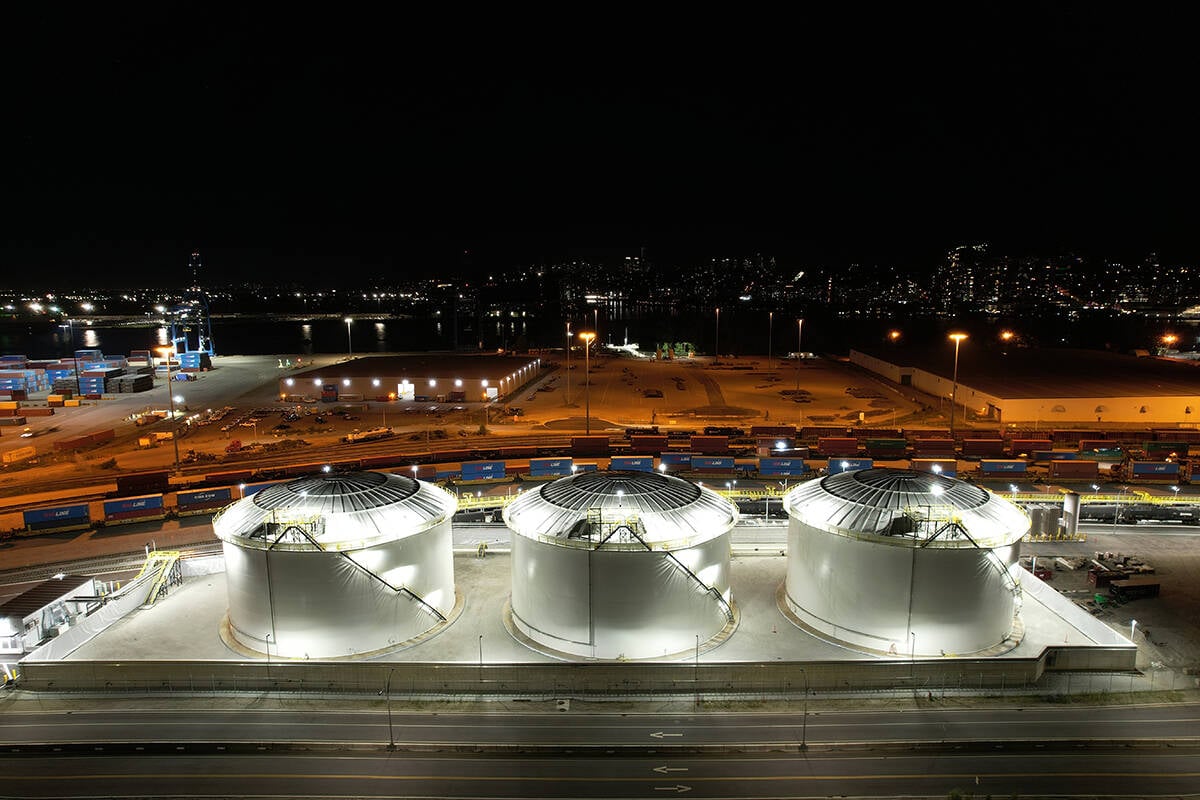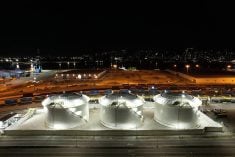A drier than normal August should come as no surprise to ecologist David Schindler.
The University of Alberta professor has been sounding the alarm for some time based on his knowledge of climate change and historic weather patterns on the Prairies.
Alberta Environment recently reported that August ended with the lowest natural runoff in history and water flow from March to August was much below average. Precipitation was much below normal throughout most of Alberta except for a few small areas with above average rainfall.
Read Also

Canola oil transloading facility opens
DP World just opened its new canola oil transload facility at the Port of Vancouver. It can ship one million tonnes of the commodity per year.
Precipitation has increased seven percent since European settlement began on the Prairies, but temperatures increased three degrees, which led to more evaporation.
“We might get more rain, but we’ll still have less soil moisture and be drier,” he told Croplife’s annual meeting in Calgary Sept. 21.
That could be bad news for prairie agriculture because semiarid regions are expected to double in size by 2050. As well, 70 percent of wetlands are gone and river flow is down to a trickle of what it once was when paddle wheelers travelled the South Saskatchewan River 100 years ago.
Geological evidence indicates southwestern Saskatchewan, southeastern Alberta and Montana have experienced droughts in the past that lasted for 30 to 40 years.
“It is very unlikely we will go another century without another of these droughts,” Schindler said.
Preventive action has been taken, but it may not be enough.
Earlier this year the Alberta government stopped granting water licences on some of the rivers feeding into the South Saskatchewan River because the supply is fully allocated. Irrigation farmers have reduced consumption through various efficiencies, but they need to cut back more.
Schindler said the Bow River’s natural flow should be at least 85 percent to maintain summer fish habitat. About 70 percent of the Bow is now allocated for agricultural, municipal and industrial use.
Climate warming, declining river flows, shrinking snow packs and glaciers, more people, more resource development and more farming is taking its toll on the fresh water network.
More farming is taking place in the green zones where agriculture was previously not practised, such as in the Swan Hills area north of Edmonton. Roads were built when oil and gas exploration began, and logging moved in. Cropland and pasture eventually followed.
Phosphorus overload is another problem across the West. The nutrient eventually ends up in rivers and lakes, causing massive algae blooms. Low flowing rivers are unable to adequately flush the lakes.
Blue green algae growth exploded in the 1990s in Manitoba’s Lake Winnipeg, affecting about 7,000 sq. kilometres on the lake’s north shore. Runoff from fertilizers and sewage effluent from Winnipeg are the biggest sources of phosphorous in the lake.
Lac La Biche in northeastern Alberta is in another endangered zone. More farming has affected water supply and quality, but other culprits include climate change, land use changes and increasing nutrient inputs. More urban and farm runoff is occurring, as well as more sewage from weekend homes.
Schindler’s summer water studies also found traces of caffeine in the water on the weekends.
“We really have a developing water quantity and quality problem on the western Prairies,” he said.
Schindler wants a holistic approach to cleaning up waterways because trying a few simple solutions does not improve the situation. Danish studies show it takes 20 years to clean a system, even after external pollution sources are removed.
“Any change you make to the landscape is likely to cause some changes to the water. Remember, these lakes and rivers are the sewers of these watersheds and we have to drink from these sewers and eat fish from these sewers.”

















